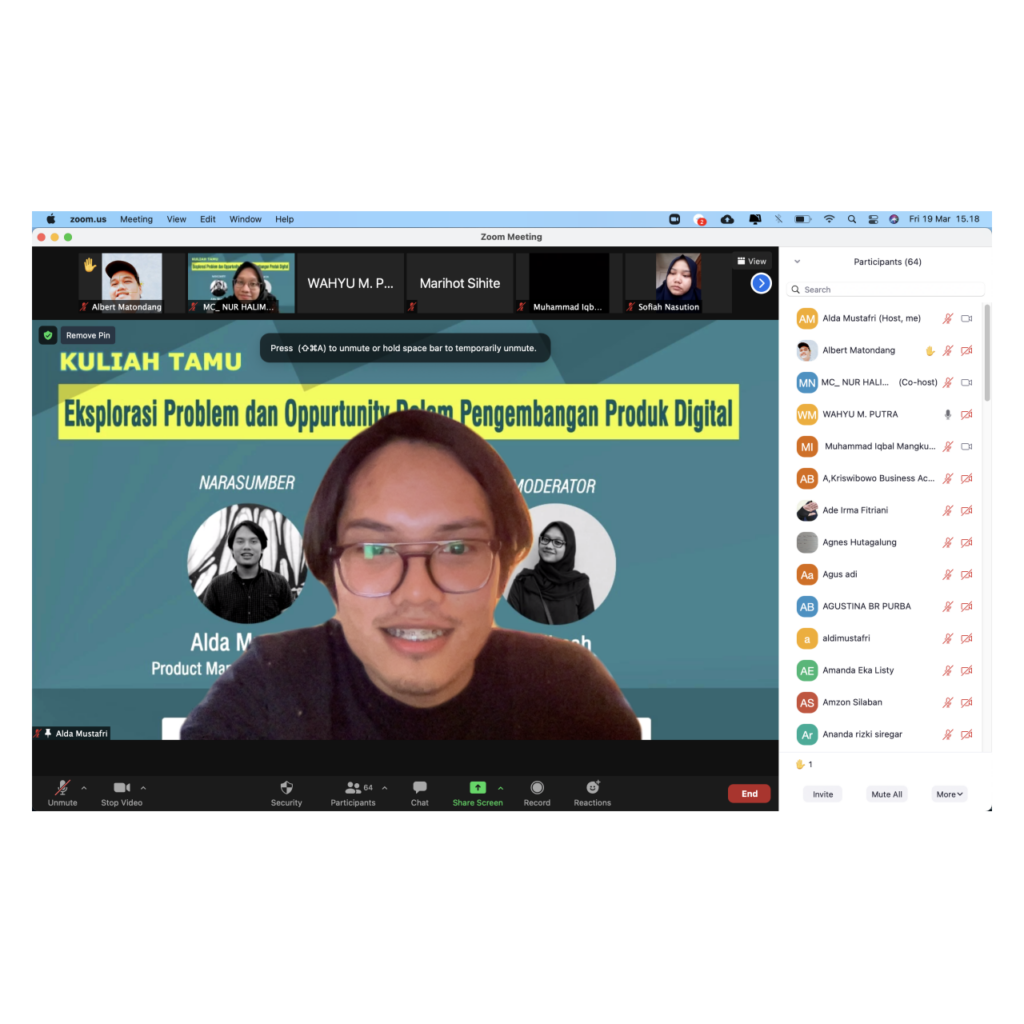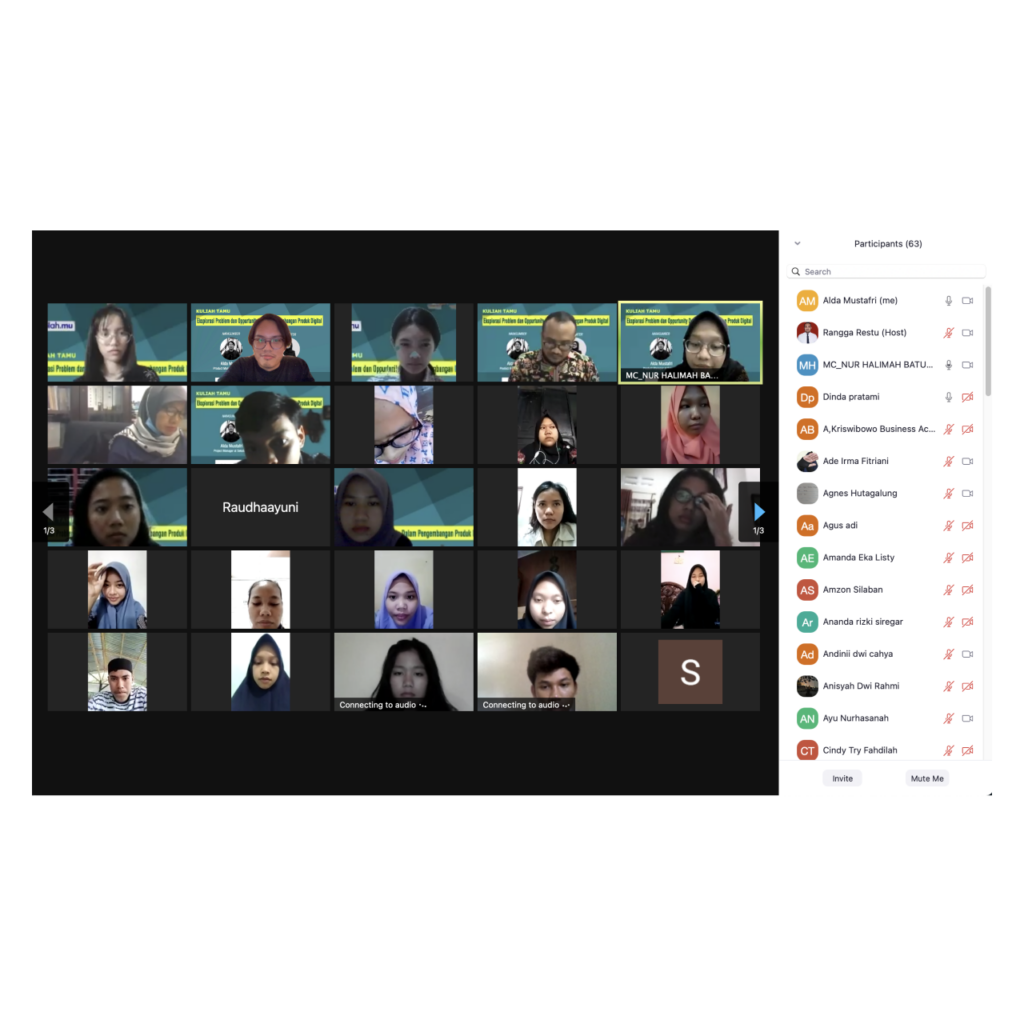On March 19, 2021, I had the honor of being a guest lecturer at the Faculty of Economics, Universitas Negeri Medan. Conducted online via Zoom, the session focused on an intriguing topic: “Exploring Problems and Opportunities in Digital Product Development.” This was an excellent chance to share insights with aspiring economists and business professionals about navigating the challenges and seizing the opportunities in the fast-paced world of digital products.
Setting the Stage: Why Problems and Opportunities Matter
I began the session by emphasizing the dual nature of product development—every problem is a potential opportunity, and every opportunity can present unforeseen challenges. Digital products, by their nature, must constantly evolve to meet user needs, adapt to technological advances, and stay ahead of market trends.
Key points included:
- The Problem-Solving Mindset: How identifying pain points can lead to innovative solutions.
- Opportunity Recognition: Spotting gaps in the market and leveraging them effectively.
- Balancing Risks and Rewards: Making informed decisions to pursue viable opportunities while managing potential pitfalls.
Sharing Practical Insights
To make the session practical and relatable, I shared real-world examples from my experience in digital product development:
- Case Studies: Instances where identifying user pain points led to successful product iterations.
- Tools and Frameworks: Methods like SWOT analysis and Design Thinking to structure problem-solving and opportunity identification.
- Collaborative Approaches: The importance of cross-functional teamwork in overcoming challenges and bringing ideas to life.
These examples illustrated how theoretical concepts translate into actionable strategies in the real world.
Engaging with the Audience
One of the most rewarding aspects of the session was the interaction with students. Their questions demonstrated a keen interest in understanding the complexities of digital product development, including:
- “How do you prioritize which problems to solve when resources are limited?”
- “What tools do you recommend for identifying opportunities in a competitive market?”
- “Can you share an example of a digital product that failed and the lessons learned from it?”
These discussions enriched the session, providing a two-way learning experience that was both insightful and inspiring.
Delivering this guest lecture was a fulfilling experience. It underscored the importance of bridging academic learning with industry practices, especially in a field as dynamic as digital product development. I hope the session helped equip the students with practical knowledge and inspired them to approach problems and opportunities with curiosity and creativity.
As I look back, I’m grateful for the chance to contribute to the learning journey of the next generation of professionals. Opportunities like these reaffirm the value of sharing experiences and fostering a culture of continuous learning and innovation.







